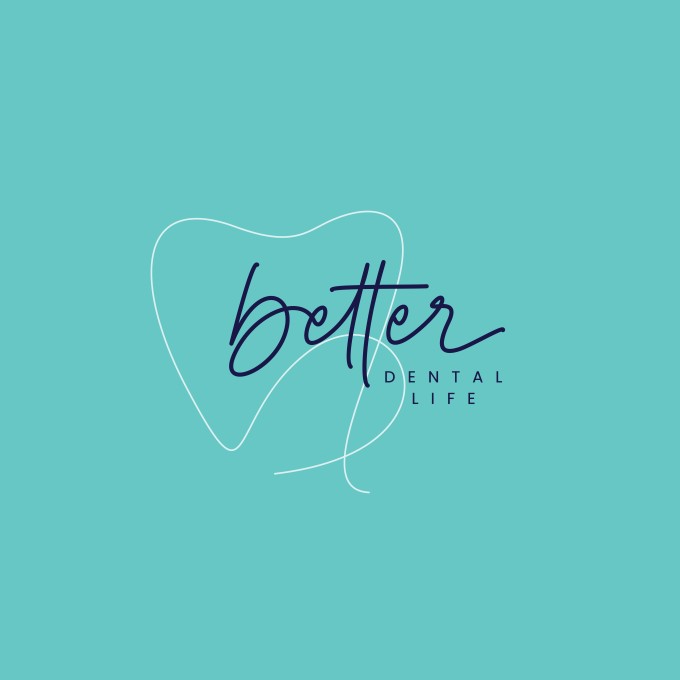What do you see?
Late night CERECing thoughts...
It's very humbling to look back on cases when I started using CEREC 12 years ago. I was so happy to take a crown straight out of the mill and put it in the patients mouth. I had no idea what I was looking for when I looked at a tooth, other than if the color was right (which really meant was it close but not perfect). Today, I look at teeth in an entirely different way. I love to see the color patterns, the anatomy, the contouring and the light reflections. I am able to see this now because I posted cases and other doctors were willing to show me how to improve. I was also willing to accept those answers. That is what I love about this forum. We are all here to grow.
So what do I see in a case like this...
Anatomy of a youthful tooth: sharp line angles, prominent central lobe and contouring at the gingival embrasures on the mesial and distal. This is contouring that is done post mill.
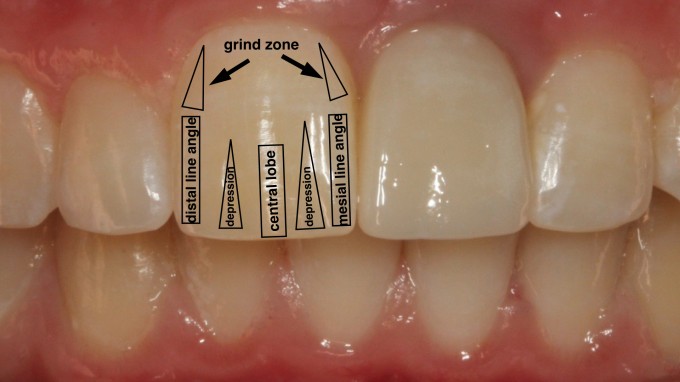
Fun color patterns: the white bands at the gingival 1/3, the blue translucency and the white framing along the incisal edge.
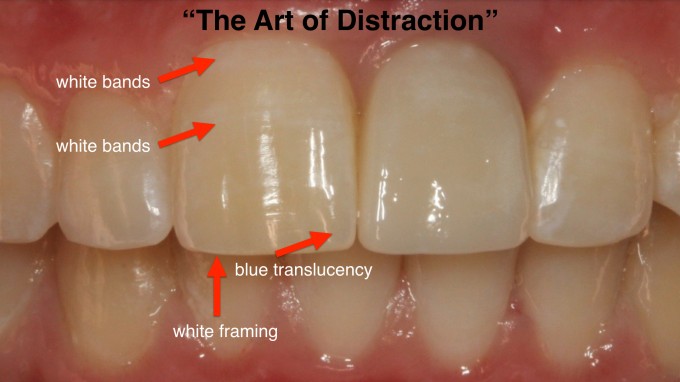
Reflections: Do my reflections mirror each other? If so, then my anatomy is similar. If not, I need to re-contour to get them to match.
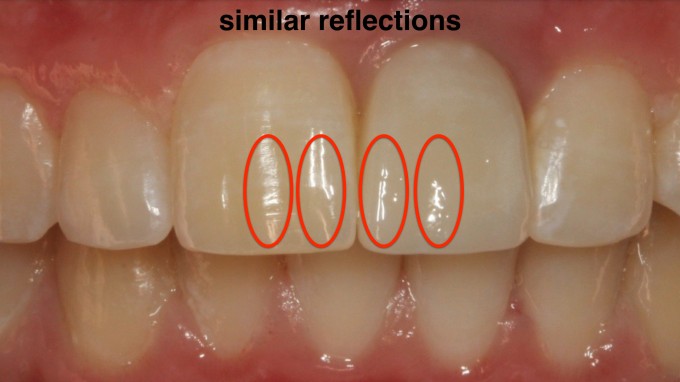
and the final...
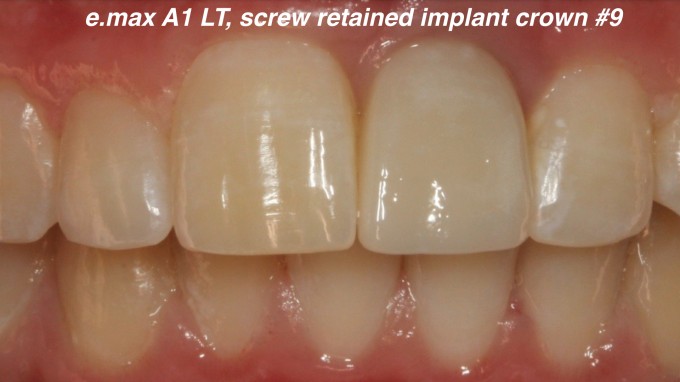
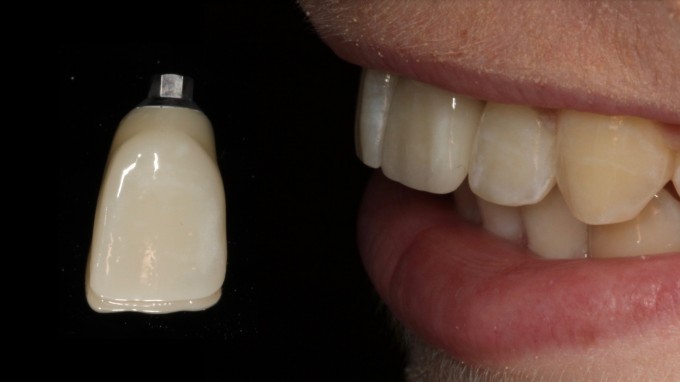
Don't you just love that we have this capability in our office? So.dang.cool.
Awesome Kris!
You can't fix what you can't see. I still remember my first time at Level 4 and Skramy commenting on a case that he did and he hated it because used the high speed to contour it and got ripped to shreds by the Spear guys. I wanted to slit my wrists because I thought I was a hack and his case that he hated would be my best case. And to make matters worse, I couldn't see what he was talking it about. It's not easy, but if you spend time looking at teeth, patients that have nice smiles and truly start to evaluate what makes up a great smile. From one tooth, to the incisal edge positions to how the teeth cradle the lower lip and fills out the buccal corridor, etc... You will start to appreciate and see in your mind what you are trying to create. Then there is the humbling aspect of evaluating the case after.
I hear a lot of doctors tell me that "their cases all look perfect with e.max A2 LT, why should I do anything else?...I typically smile and say that is fantastic! You are simply more talented than me." Perspective is everything, I can't convince someone to grow if they don't see a reason why they need to. As Jim Collins opens in his book " Good to Great", he starts by saying "Good is the enemy of great". This statement is profound and can prevent many of us from achieving our full potential in all aspects of our lives.
As always, your work looks fantastic. For us newbies, what instrumentation (specific burs, wheels, points, diamonds/carbides) do you use to contour (in this case e.max) post mill?
On 9/18/2018 at 11:55 am, Paul Kruth said...As always, your work looks fantastic. For us newbies, what instrumentation (specific burs, wheels, points, diamonds/carbides) do you use to contour (in this case e.max) post mill?
i would like to know that as well.
thanks
On 9/18/2018 at 12:06 pm, Shammick Kotecha said...On 9/18/2018 at 11:55 am, Paul Kruth said...As always, your work looks fantastic. For us newbies, what instrumentation (specific burs, wheels, points, diamonds/carbides) do you use to contour (in this case e.max) post mill?
i would like to know that as well.
thanks


Purchase a Resident Membership
to watch the full version of this video plus hundreds more. Subscribe TodayKristine, a great job for sure, especially under esthetical aspects.
It would be great if I could handle the coloring of crowns just once only 20 percent as nicely as you do it regularly.
I wonder though why you worry so much about tooth structure in such a case?
Isn‘t it the easiest way just to use bioreference and not to worry much about it any more? Is it that you just want to practice your analytical skills as often as possible?
On 9/18/2018 at 11:55 am, Paul Kruth said...As always, your work looks fantastic. For us newbies, what instrumentation (specific burs, wheels, points, diamonds/carbides) do you use to contour (in this case e.max) post mill?
Why certainly....

On 9/18/2018 at 12:56 pm, Armin Giessmann said...Kristine, a great job for sure, especially under esthetical aspects.
It would be great if I could handle the coloring of crowns just once only 20 percent as nicely as you do it regularly.
I wonder though why you worry so much about tooth structure in such a case?
Isn‘t it the easiest way just to use bioreference and not to worry much about it any more? Is it that you just want to practice your analytical skills as often as possible?
Hi Armin-
Thanks for the feedback and compliments. I'm not sure I quite understand the question though on the tooth structure. This was a screw retained implant crown, so no tooth structure was removed.
As far as bioreference vs bioindividual... I could have definitely used bioreference but post mill I would still need to contour to give the natural appearance that her other teeth have. Because the pointed cylinder bur (which mills out the crown) has a 1.8 diameter tip, it won't mill out the detailed anatomy that I was looking for in this case. That has to be done post mill.
Yes- I am always wanting to practice my analytical skills as often as possible. I am always striving to improve and this is the only way I know how :)
With „structure“ I meant basically the depressions (causing the reflections, too) and the line angles and other surface variables.
Sorry that I still have not learnt the English terminology well enough.
Ok, for perikymatias or Retzius stripes (do you say that in English?
Ahhh- yes, on the cerecdoctors lab kit I love that inverted cone for just that reason. It's great for texture!
Great post and explanation of what you do and how you do it, great teaching demo for my assistants (and me) thanks!





